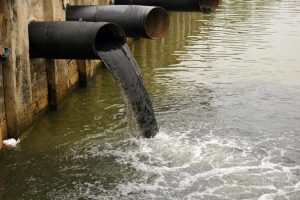pollutant:
Humus is the black, carbon-containing residue that remains in the soil after the vegetative tissues of plants that were first growing in the soil have decayed.
Soil Pollution is brought on by the overuse of fertilizers, pesticides, insecticides, and herbicides.
Anthropogenic: The worst cases of water contamination are mostly the result of human activity.
Definition of Environment:
Environment refers to everything that surrounds us and has the potential to have an impact on us.
Humus:
The decay of the vegetative tissues of the plants that were initially growing in the soil is what causes the soil to have a dark or black residue that contains carbon.
Environmental Pollution:
It is possible to describe it as the existence of any undesired entity (species) in the environment in one or more instances and for a length of time sufficient to endanger life and enjoyment or obstruct a pleasurable existence.
Natural Quality:
The term “natural quality” refers to the earth’s inherent makeup.
Pollutant:
A pollutant is any unwanted substance that is present in the environment in excess of what is naturally present and that has an adverse impact on people, other living things, and the environment.
Eutrophication:
When chemical nutrients are concentrated more heavily in an ecosystem, for instance, it is referred to as eutrophication. This can have detrimental impacts on the environment, such as a sharp decline in fish and other animal populations, water quality, and ecosystem diversity.
Smog:
An example of air pollution is smog, which is a combination of the terms smoke and fog.
Water quality criteria:
the pollution level and duration of exposure at which negative impacts on welfare and health occur.

Air Pollution:
Disequilibrium in the air is caused by the addition of foreign substances, primarily from human-made sources, and causes harm to both biological communities and human communities.
Noise Pollution:
Noise is an unwelcome sound that makes people feel uncomfortable. It is also the wrong sound, coming from the wrong direction at the wrong time. Modern civilization has led to noise pollution.
What happened in the Bhopal Gas Tragedy?
The Bhopal Gas Tragedy:
The Bhopal disaster, also known as the Bhopal gas tragedy, was an industrial catastrophe that occurred at a Union Carbide Pesticide factory in the Indian city of Bhopal, Madhya Pradesh. It was the first to endanger life and enjoyment or to disrupt a good life.
Explanation:
Any unfavorable alteration to the physical, chemical, or biological properties of the air, land, or water that may negatively impact our industrial processes, daily lives, cultural assets, or the survival of other desirable species. It may also squander or degrade our natural resources.
Natural and human-made pollution is both possible (man-made). Natural occurrences like forest fires, volcanic eruptions, and biological activities in the environment can all lead to natural pollution. Result of anthropogenic pollution
a- by introducing substances meant to increase crop yield
b- by adding substances generated as a result of societal and industrial processes.
Concept of Pollution:
This cosmos, with its own features and functions, was beautifully made by God. Every area of the cosmos has its own unique natural makeup. It performs well when its natural composition is not altered, but if the natural quality is altered in any way—by changing its natural condition or by introducing an unwelcome pollutant—it becomes unsuitable.
Effect on Living things:
Any adverse modification or undesired change pollutes the environment. Environmental pollution can have a negative impact on people, animals, plants, or objects, harming health, slowing plant development, or corroding metals. As they are carried by air or water, the influence might have a local or global impact. Wastewater from chemicals and other businesses pollutes the lakes and rivers. Gases from industry, thermal power plants, and automotive exhausts, among other sources, contaminate the air.
Soil pollution:
The excessive use of pesticides, insecticides, herbicides, and other types of fertilizers results in soil contamination. Solid industrial and home waste, in addition to agricultural activities, contribute to soil. contamination of the water and air.
According to the 1992 version of the American Heritage Dictionary of the English Language, pollution is:
“The act or process of polluting or the state of being polluted, especially the contamination of soil, water or the almosphere
by the discharge of harmful substances”
Read: 200 websites are blocked by google for publishing false news

